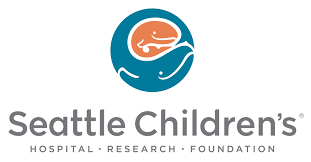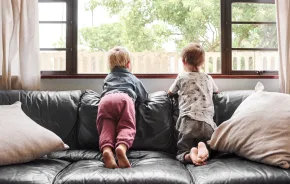
Editor's note: This article was sponsored by Seattle Children's Hospital.
When adults sense the dull throb of a headache coming on, we can likely figure out its origin — too much time staring at a screen, too few glasses of water or one too many glasses of wine last night. When our kids get a headache, though, they often can’t describe exactly what they’re feeling. That leaves parents guessing: are they just tired, dehydrated or overstimulated? Trying to get out of a dreaded chore? Or is something really wrong?
Headache is a broad catchall term for any discomfort from the neck up, but not all headaches are the same. Like adults, children can get different types of headaches, including migraine headaches, tension-style headaches, cluster headaches and headaches brought on by infection, illness and minor bumps to the head.
Types of headaches
If you’ve ever suffered from a migraine — a pulsing, throbbing headache often accompanied by sensitivity to light and sound — you definitely hope that your child won’t experience one. Unfortunately, research shows migraine headaches have a strong genetic link; kids who have one biological parent with a history of migraine have a 50 percent risk of developing migraine headaches, while kids descended from two migraine sufferers have a 75 percent risk.
A migraine headache can strike teens and young children; and even infants, who can’t tell caregivers what they’re feeling. But parents can look for physical clues: Kids experiencing migraine often appear pale or red, may vomit and usually want to crawl into bed and turn off the lights.
Tension-style headaches can result from stress, physical strain or illness. Unlike migraine headaches, tension headaches don’t throb or pulsate, don’t get worse with physical activity and aren’t accompanied by nausea or vomiting.
Cluster headaches — sharp, stabbing headaches that strike one side of the face, sometimes presenting with a stuffy nose or congestion — are quite rare in children, says Blume. They’re short in duration (under three hours) and often “clustered” over the course of a day or a week.
Chronic daily headaches (CDA) are headaches occurring more than 15 days per month. These headaches can result from head trauma or an infection.
How common are headaches in childhood?
Childhood headaches are more common than many caregivers realize, says Heidi Blume, M.D., M.P.H., associate professor in the Division of Pediatric Neurology at Seattle Children’s Hospital. In fact, Blume notes, headaches are widespread in kids and teens, and become more common as kids get older, particularly for girls.
“One of the best population-based studies in the U.S. found that 5 percent of kids 4–6 years old noted ‘frequent or severe headaches in the last year,’ along with 13 percent of kids age 6–12, 22 percent of those 12–16, and 27 percent of teens 16–18,” says Blume.
Headache care at home
Kids’ headaches usually respond well to simple lifestyle changes, and swift treatment at the beginning of a headache can prevent it from getting worse. “Most kids’ headaches, even migraine, can be treated with lifestyle changes, such as drinking a large glass of water and resting at the onset of a headache, and [taking] over-the-counter medications like ibuprofen and Tylenol,” says Blume.
Blume uses the term S.M.A.R.T. to help families remember some of the most effective strategies for dealing with frequent childhood headaches: S reminds kids to get enough sleep; M stands for meals and hydration; A is for moderating strenuous activity; R is for relaxation; and T refers to headache triggers like dehydration, foods containing nitrates, or too much stress.
Other treatments include biofeedback therapy, cognitive behavioral therapy (CBT), and daily supplements like magnesium and vitamin B2. For some children with recurrent headaches, prescription medications may be used, but may take 6–12 weeks to see an effect, says Blume.
When to call your doctor
It’s important to note that “common” isn’t the same as “normal”; just because headaches are widespread doesn’t mean that it’s normal for children to suffer from frequent, debilitating pain.
Blume recommends that children who get four or more debilitating headaches (ones so painful that they can’t function normally) per month get checked out by a medical professional. “If headaches are becoming more frequent or more severe, or waking the child at night, caregivers should seek care with their primary care provider,” she says.
And, she notes, headaches associated with other symptoms that might indicate neurological problems, like muscle weakness, numbness, problems with speech, or progressive decline in functions, warrant an immediate call to your healthcare provider.
Happily, many children who experience frequent headaches will outgrow them as they move into adulthood. Until then, the next time your child collapses on the couch with complaints of a pounding head, you’ll be ready.












